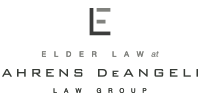Under Medicaid law, assets are either “countable” or “exempt.” Countable assets affect the individual’s immediate Medicaid eligibility and must be transferred, restructured, or spent down in order for the person to become eligible for Medicaid benefits. Exempt assets, in contrast, are not counted towards the individual’s Medicaid eligibility.
Remember this basic rule: A Medicaid recipient can keep only a home, $2,000 cash, and a few other assets. A spouse may keep substantially more.
Countable assets include funds in savings accounts, checking accounts, cash, certificates of deposit, stocks and bonds, commercial real estate, and personal property. In other words, countable assets include almost anything owned by the Medicaid applicant (and spouse) that can be liquidated. People often forget that they must include cash even if it is hidden under a mattress. Full honesty when applying for Medicaid benefits is a must.
Countable assets do not include a principal residence (up to a $750,000 or an unlimited value if there is a community spouse or some other qualified person residing in the home), up to $1500 cash value of life insurance policies, a personal automobile (or 2 automobiles for a married couple), an irrevocable burial plan, and certain types of investment property. One wedding ring and one engagement ring are also excluded, along with household goods and personal effects.
Retirement Accounts
Countable assets may also include pension and retirement plans (IRAs, 401(k)s, and the like). A plan belonging to a non-Medicaid spouse is not countable, regardless of the age of the non-Medicaid spouse. If the Medicaid applicant is under age 59½, it doesn’t matter whether the applicant will incur a significant tax penalty as a result of cashing in the retirement plan, the assets in the plan will be countable unless the participant can begin taking monthly payments based on his or her life expectancy from the plan. After age 59½, the Medicaid spouse must elect to receive monthly distributions over his or her life expectancy in order for the plan to be non-countable. If the spouse seeking Medicaid is over age 70½, his or her IRA will not be considered a countable resource, but the required minimum distributions will be considered income.
Financial Accounts – Joint Accounts and Tenancy in Common Accounts
Joint accounts are typically identified through their title, which usually contains an “or” (e.g., “John Jones or Mary Jones”) rather than an “and,” which is often used in tenancy in common accounts (e.g., “John Jones and Mary Jones”). All funds in joint accounts are considered countable assets to the Medicaid applicant, unless proved otherwise. Funds or property held as tenancy in common accounts are countable to the extent of the person’s interest in the asset, unless the asset is “unavailable,” which means that the asset is not available to the Medicaid applicant because the other owner(s) of the asset refuse(s) to make it available. In such cases, though, the State of Idaho will probably require the applicant or the applicant’s representative to seek partition of the asset in the courts.
It is crucial that someone advising about Medicaid eligibility understand how countable and non-countable assets work and what an applicant might do to position themselves for eligibility. For instance, if an applicant does not have an automobile for use in getting to doctor appointments or in which kids might ferry them to family activities, an applicant can spend cash that otherwise might keep him or her from becoming eligible on a car to use in the future. An applicant that is not eligible for Medicaid because he or she has not begun taking regular monthly distributions from a retirement account might become eligible without having to spend all the money in the account by starting the process of taking monthly distributions.
If you have a question about countable and non-countable assets and Medicaid eligibility, we would love to help—just give us a call.
